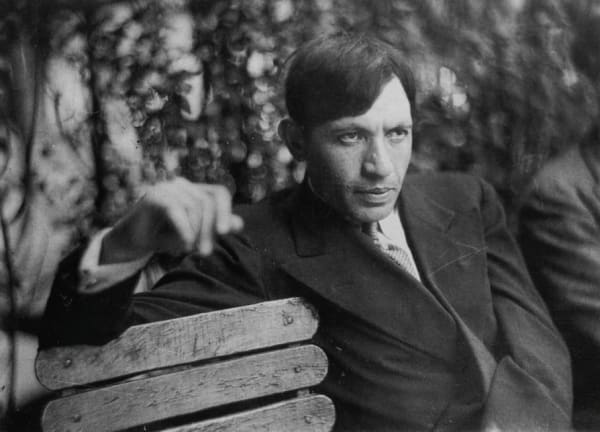-
Chaïm Soutine
Le Petit quartier de mouton -

-
Considered the Modernist Master of Flesh, Chaïm Soutine painted an extraordinary sequence of canvases focusing on the newly slaughtered carcasses of livestock—the vermilion-colored flesh and golden suet flayed open for the artist’s penetrating inspection. Le Petit quartier de mouton is among Soutine's most powerfully visceral examples from this body of work, with vigorous streaks and swirls of viscous, jewel-like pigment used to render the hemorrhaging slab of hanging meat. In the present work, Soutine has stripped away any narrative or allegorical setting, laying bare the naked fact of the animal and its death. “There is no room for anything but the carcass,” David Sylvester described of the series. “The carcass is the setting.” [1] Cropped at the top and bottom by the edge of the canvas, the immortalized carrion pushes into the viewer’s space with a visceral immediacy, asserting its sheer physical presence. Most arresting is Soutine’s handling of the paint—viscous, heavily loaded strokes, utterly unrestrained—which seems to possess the same fatty carnality as the butchered animal itself. The decaying flesh of Le Petit quartier de mouton retains a strong sense of mass and plasticity, as Soutine’s thick, sensuous brushwork evokes the physical, observed reality of striated muscle, curving ribs, and glistening deposits of suet.
-

Rembrandt, Le Boeuf écorché, 1655, oil on panel
Musée du Louvre, Paris
-

La Ruche, Montparnesse, Paris, circa 1918 -
Soutine’s intensely sensual yet gruesome subject matter resonated powerfully in the post-war era. “Soutine was not just my hero,” declared Baselitz, who hitchhiked to Amsterdam in 1959 to view Le Bœuf at the Stedelijk Museum, “but in our rotten post-war period, his images were also a quite perfect replica of a skewed world—our world… There was more of the existential and the broken, as well as the cynical and the hideous, in his images.” Yet, no artist carried forward Soutine’s legacy with more searing intensity than Francis Bacon, for whom the animal carcass, with its mangled flesh, served as a powerful emblem of the frailty and brutality of the human condition. Bacon took David Sylvester to admire Soutine’s work at the Redfern Gallery in 1953, just a year before he painted his own Figure with Meat, in which two suspended sides of beef provide a raw and disturbing visual analogue for the seated pope’s epic scream.
In Le Petit quartier de mouton, the paradoxical combinations of empathy and brutality, appetite and hunger, reason and magic teeter in an unstable reality. An exorcism of his own hunger and desire, Soutine devours the carcass with his eyes, rather than his mouth, creating a sensual feast for both himself and the viewer.
-
 Jacques Guérin, 1980
Jacques Guérin, 1980








